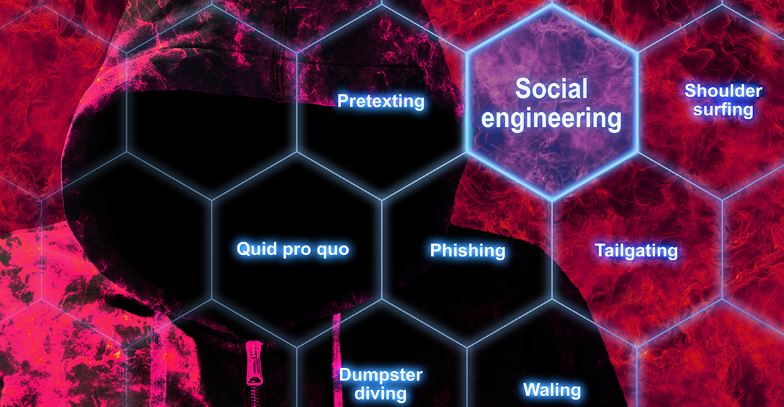Social Engineering Techniques

Social engineering attacks leverage various aspects of human nature to carry out their malicious activities, exploiting vulnerabilities such as trust, greed, fear, curiosity, and the inclination to assist others. An insightful study indicates that a significant majority of respondents, around 75%, perceive social engineering and phishing attacks as the most significant threats to cybersecurity within their respective companies. The landscape of cybersecurity threats continues to evolve rapidly; while the occurrence of conventional attacks might decline, more sophisticated and nuanced threats are increasingly prevalent. Thus, it becomes imperative for individuals and organizations alike to remain vigilant and well-informed in order to protect themselves effectively against cyber threats. This blog discusses about the Social Engineering Techniques.
Baiting
1. Baiting attacks employ deceptive tactics to entice victims based on their susceptibility to greed or curiosity. Social engineers strategically utilize enticing stimuli to lure unsuspecting users into compromising situations that result in the theft of personal information or the introduction of harmful malware into their systems. For instance, malevolent actors often leave infected USB memory sticks in high-traffic areas, exploiting individuals’ curiosity to access the content on these devices. It is crucial to refrain from engaging with unattended USB devices and promptly report such incidents to the security team to minimize risks.
Pretexting
2. Pretexting involves the creation of fictional scenarios to manipulate individuals into revealing sensitive information. Attackers adept at pretexting use fabricated tales to extract confidential data, such as IT system credentials or personal details of colleagues, from unsuspecting employees. This form of social engineering typically necessitates meticulous research on the target to ensure the plausibility of the pretext and establish trust with the victim. In the event of encountering such scenarios, it is essential to verify the identity of the requester, refrain from divulging personal information, and promptly inform the organization’s IT department about the suspicious interaction. This article discusses about the Social Engineering Techniques.
Watering Hole
3. The watering-hole technique is a sophisticated attack vector where malicious actors compromise legitimate websites frequented by specific user groups to infiltrate targeted individuals’ devices. By infecting an existing website or fabricating a replica of a popular site, such as one frequently visited by company employees, perpetrators aim to infiltrate a user’s computer or breach the organization’s network. To mitigate the risks associated with watering-hole attacks, individuals should exclusively access websites with secure HTTPS connections, regularly update software applications, and utilize reputable malware detection tools for enhanced protection.
Quid Pro Quo
4. Quid pro quo schemes rely on exploiting individuals’ inclination towards reciprocity by offering benefits or services in exchange for sensitive information. For instance, an impostor posing as an IT specialist may request an individual’s device login credentials under the guise of enhancing its performance. To safeguard against such deceptive practices, it is essential to validate the legitimacy of requests from purported experts, scrutinize their methods and tools thoughtfully, and implement robust anti-malware solutions to prevent data compromise.
Scareware
5. Scareware tactics involve the dissemination of deceptive software alerts, typically in the form of pop-up messages, that coerce victims into believing their systems are compromised or vulnerable. These misleading notifications prompt individuals to visit malicious websites or purchase ineffective antivirus solutions, thereby exposing them to further cyber risks. Mitigate the impact of scareware by deploying ad-blocking tools, utilizing reputable antivirus software, and avoiding interaction with suspicious pop-up messages to uphold system security effectively.
Tailgating and Piggybacking
6. Tailgating and piggybacking strategies encompass deceptive practices where unauthorized individuals exploit physical access control mechanisms to gain entry into secure or restricted areas. This deceptive tactic may involve tailgating an employee into a facility by feigning lost access credentials, posing as a maintenance technician, or soliciting assistance with an ostensible task. To prevent unauthorized access, individuals must exercise caution when granting entry to unknown individuals, verify their credentials, and promptly report any suspicious encounters to security personnel.
Vishing
7. Vishing, or voice phishing, represents a form of social engineering wherein attackers employ telephonic communication to extract sensitive information or manipulate targets. Recent statistics from TrueCaller highlight the substantial financial losses, amounting to $29.8 million, incurred by Americans due to phone scams in a single year. Protect oneself from vishing attempts by refraining from disclosing personal information in response to unsolicited calls or messages and remaining vigilant against fraudulent schemes that exploit telecommunication channels for illicit gains.
Shoulder Surfing
8. Shoulder surfing denotes the practice of covertly observing individuals as they input confidential information, such as passwords, with the intent of unauthorized data acquisition. While this technique traditionally involved close-range observation, modern perpetrators may leverage advanced technologies like binoculars or hidden cameras to monitor victims remotely. To mitigate the risk of shoulder surfing attacks, implement robust security measures such as utilizing complex passwords, leveraging biometric authentication, and adopting multi-factor authentication protocols to safeguard sensitive information effectively.
Dumpster Diving
9. Dumpster diving tactics entail sifting through discarded materials, such as company documents, in search of sensitive or confidential information. Prevent information leakage stemming from dumpster diving incidents by incorporating secure disposal practices, including shredding documents before discarding them, to thwart malicious actors’ attempts to exploit corporate waste for data breaches.
Deep Fakes
10. Deepfakes, a contemporary threat vector facilitated by sophisticated machine learning algorithms, manipulate visual and auditory media to create convincing counterfeit content. Detecting deepfake content requires a discerning eye for anomalies like inconsistent facial shadows, unnatural eye blinking patterns, and imperceptible vocal irregularities. Stay vigilant against deepfake manipulation by scrutinizing multimedia content for subtle discrepancies and leveraging advanced detection tools to mitigate the risks posed by fraudulent digital alterations.
DIGITAL MARKETING SERVICES FROM APPSREAD

